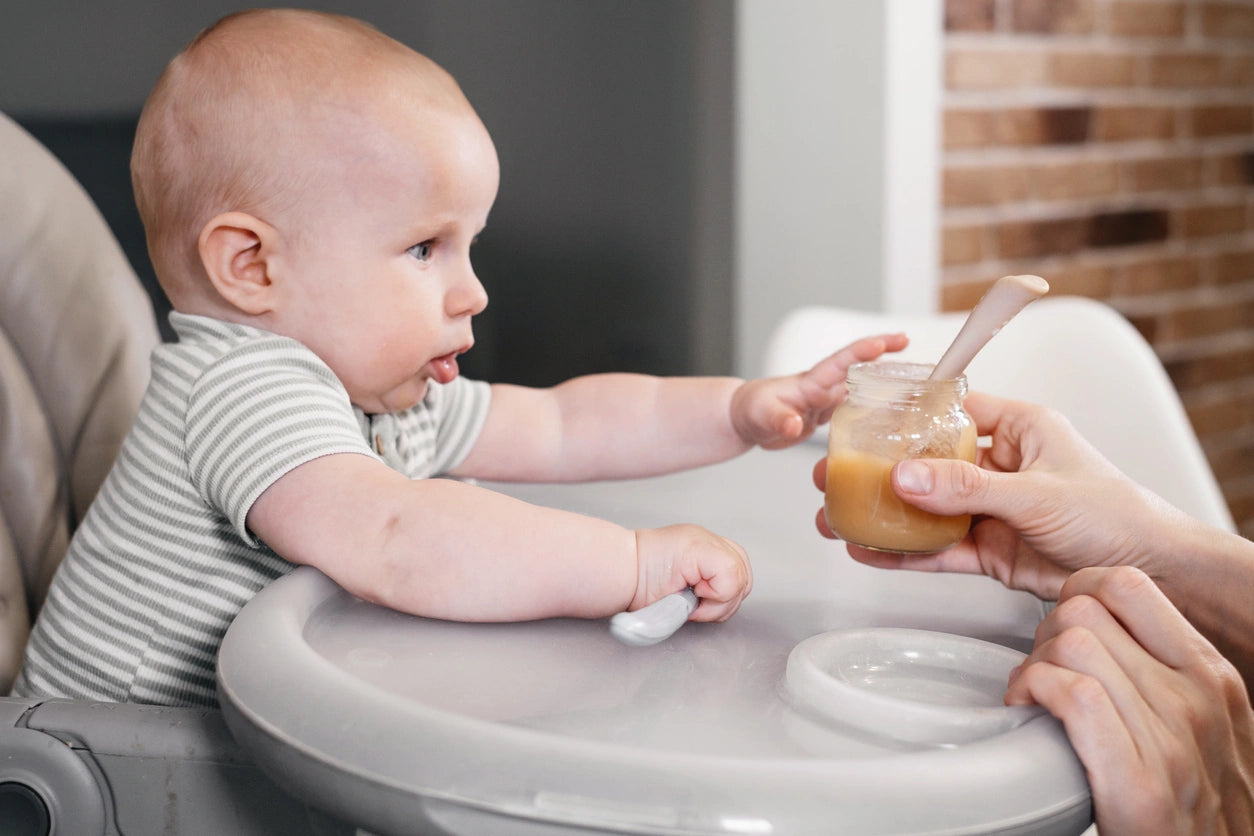Infant Feeding and Sleep Schedule: Here’s How to Create Your Baby’s Routine
A gentle baby routine can support sleep, feeding, and sanity
Becoming a parent brings with it many joyful yet predictably unpredictable days. While babies thrive off of having a routine, many parents struggle to find a balance between maintaining a schedule and allowing for flexibility.
If this sounds familiar, you are not alone. This article focuses on how to create a routine for your infant that supports adaptability to the unexpected changes each day may bring.

How does an infant feeding schedule help you and your baby?
There are many benefits to establishing a schedule for your infant, including:
-
Better sleep
-
Improved feeding habits
-
Less stress for both parents and babies
The American Academy of Pediatrics (AAP) encourages parents to develop predictable routines early on. According to the AAP:
“Building consistent routines provides comfort and a sense of safety to your baby. They understand when it is time to play, eat, sleep, and expect a loved one to return. You can help your baby build this sense of trust and safety with everyday things such as bedtime routines, mealtimes, and offering regular times for play.”
💡 Pro tip: Try using the same plate or spoon for mealtimes both at home and on-the-go to signal consistency to your baby. And if you’re still trying to get your little one on a schedule, check out our full guide on how to get your baby on a feeding schedule.
What does research say about baby routines and development?
Studies have shown that routines can:
-
Support positive child development
-
Improve both mental and physical health
-
Help children handle unexpected changes and challenges
Bottom line: Starting a flexible schedule early can actually make your child more adaptable in the long run.
What does a realistic infant feeding schedule look like?
All infant schedules typically include:
-
Feeding times
-
Naps and bedtime
-
Play and exploration
It’s not about rigid blocks on a clock, it’s about finding a rhythm that works for your baby (and for you). Wondering how much milk your baby needs, depending on their age? Whether you’re breastfeeding or using formula, we break it down in this helpful guide.

What makes a baby’s daily routine? Feeding, naps, and play
As you shape your baby’s schedule, here are evidence-based recommendations from the AAP:
-
Infants under 1 year: 12–16 hours of sleep per day (including naps)
-
Toddlers (1–2 years): 11–14 hours of sleep per day (including naps)
-
Sleep cycles: Typically become more consistent after 6 months
-
Solid food introduction: Around 6 months of age
-
After 9 months: Offer 2–3 nutritious snacks each day
How much sleep and food do babies need?
As your infant grows, their sleep and nutritional needs will change – this means that their daily schedule will need to change as well. It can feel overwhelming to maintain a schedule with all these changes, but Bébé Foodie’s mobile app is here to take the stress away!
Our team of experts has developed detailed age-based infant sleep and feeding schedules for you to refer to as a guide at each stage of your parenting journey. As a reminder, these are typical schedules but by no means are meant to be a rigid, “one-size fits all” template to follow exactly as written. We offer this example to give a general framework to take the stress and guesswork out of building your child’s daily routine.
How to shift your baby’s routine when starting solids
Introducing solids is an exciting (and sometimes messy) milestone, but it can also shift the flow of the day.
You might notice:
-
Your baby is hungrier at different times
-
Naps adjust based on energy levels after meals
-
You’re offering new textures and types of meals, not just bottles or breastfeeding
That’s okay. A flexible approach helps keep things calm and responsive.

How to create an infant feeding schedule that feels doable
Following your baby’s cues without losing the routine
At Bébé Foodie, we believe your baby leads the way. That includes:
-
Watching for hunger cues (even if it’s “off schedule”)
-
Adjusting naps or bedtime as needed
-
Being responsive without losing structure
By doing this, you’ll:
-
Strengthen your emotional connection with your baby
-
Encourage self-regulation
-
Support a healthy, trusting relationship
There’s no one-size-fits-all baby schedule (and that’s okay)
Each baby has their own preferences and patterns.
Here’s what that might look like:
-
Some days they’ll nap longer
-
Other days they’ll be hungrier more often
-
One week might feel easy, the next unpredictable
Your job? Tune in and adjust. It’s okay to honor their individuality, that’s what makes a schedule truly work.
How to stay flexible and still build healthy sleep and feeding habits
Bébé Foodie isn’t about strict schedules. We believe in:
-
Flexibility within a gentle routine
-
Modeling adaptability for your child
-
Letting go of guilt when the plan changes
💡Going to a family event during nap time? Adjust the nap or do a car snooze. Life happens, and your baby will bounce back.
What to do when the routine falls apart (because it will)
Let’s be honest, there will be days when everything goes sideways- and that’s okay.
What matters is having a structure you can return to when:
-
A nap is missed
-
A feed gets delayed
-
The whole day feels off
Your routine is a soft place to land, not a rulebook to break.

At Bébé Foodie, it is our mission to minimize stress in all aspects of your parenting journey. This includes helping you create a flexible and adaptable schedule that works for you and your baby. At the core of creating a flexible schedule is listening to your infant’s cues and building a routine that is responsive to their individual needs.

Written by Dr. Irini Kolaitis, MD
Pediatrician & Advisor at Bébé Foodie
Dr. Irini Kolaitis is a board-certified pediatric hospitalist in Chicago, with dual certification in General Pediatrics and Pediatric Hospital Medicine. With clinical expertise in food-related issues like anaphylaxis, feeding challenges, and nutritional deficiencies, she brings both professional and personal insight to Bébé Foodie. As a new mom, Dr. Kolaitis understands the ups and downs of introducing solids and supports our mission to make nutrition guidance simple and pressure-free for families.




Leave a comment